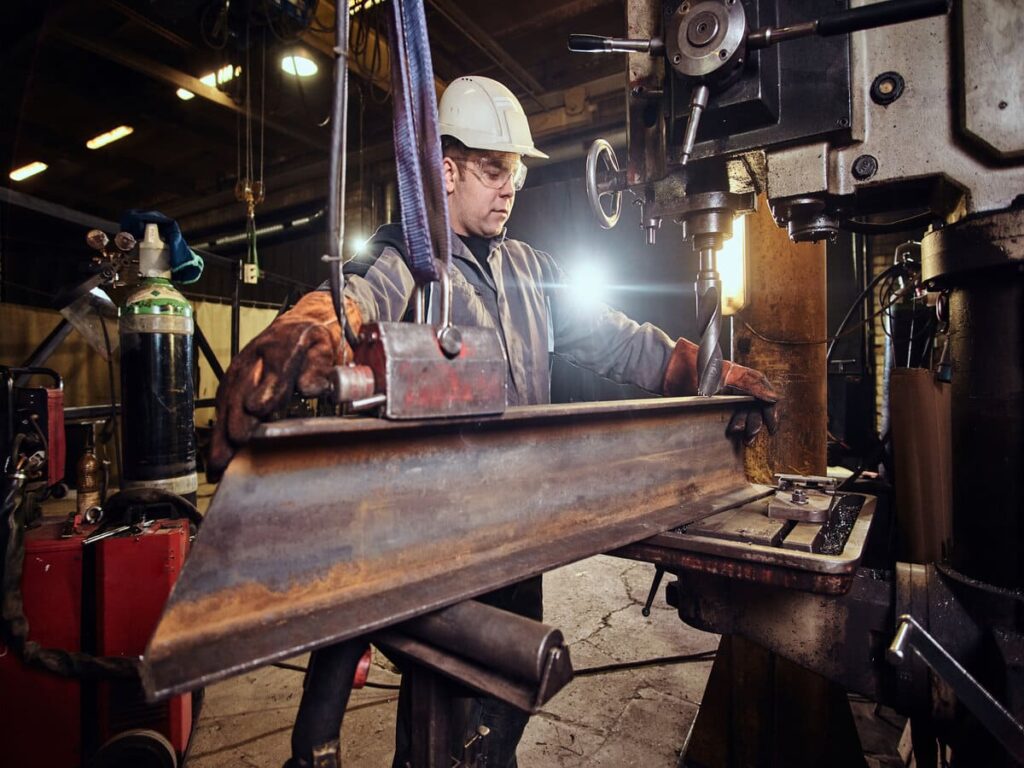Heavy fabrication projects involve creating large, sturdy structures, often seen in sectors like building construction, shipbuilding, and manufacturing large machinery. These projects stand out due to their use of thick, strong materials and the need for special equipment and skills.
Materials Commonly Used in Heavy Fabrication
The choice of materials in heavy fabrication is everything to the success of a project. This relies on heavy metals, alloys, and advanced composites. The selection of each material is based on its properties: heavy metals for strength and durability, alloys for resistance to corrosion and wear, and composites for their lightweight yet strong characteristics. These materials are foundational in constructing structures and equipment that must endure extreme conditions and heavy use, such as large buildings, bridges, and industrial machinery.
Cutting Techniques in Heavy Fabrication
Cutting techniques are another factor in heavy fabrication, shaping materials into precise dimensions and forms. Plasma cutting stands out for its ability to smoothly slice through thick metal plates, utilizing a high-velocity jet of ionized gas. Laser cutting offers precision, harnessing a focused beam of light to cut with minimal material waste and ultra-fine edges. On the other hand, waterjet cutting uses a high-pressure stream of water, often mixed with abrasive particles, making it ideal for cutting a wide range of materials without inducing heat-related distortions. Each of these cutting methods has unique advantages, and their application depends on factors like material type, thickness, and the desired precision of the cut.
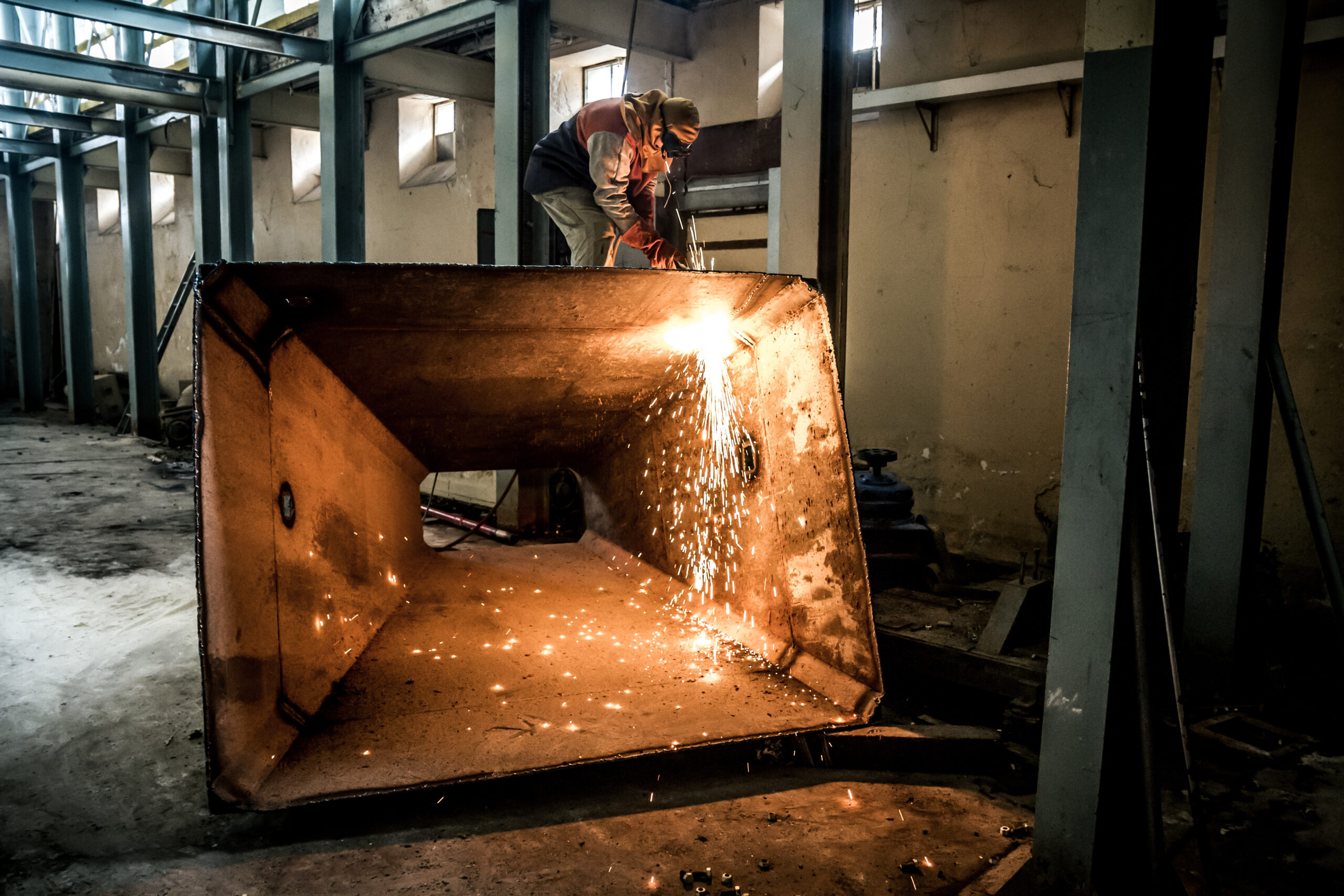
Welding Methods for Heavy Materials
Welding is another mainstay when working with heavy materials, and selecting the right technique is important for strong, durable joins. The selection of each material is based on its properties: heavy metals for strength and durability, alloys for resistance to corrosion and wear, and composites for their lightweight yet strong characteristics. TIG (Tungsten Inert Gas) welding, known for its precision, uses a non-consumable tungsten electrode to produce the weld. This method is particularly effective for welding at difficult angles or tight spaces. Using arc welding, a prevalent method, the welder creates an electric arc between a stick electrode and the materials to join them.
Bending and Forming Heavy Metals
Bending and forming heavy metals are other parts of shaping materials for heavy fabrication. In press brake forming, widely used for creating precise bends in metal sheets, operators place the metal sheet between a punch and a die set on a press brake. This method allows for the creation of various angles and complex shapes with high accuracy. Roll bending is another technique, ideal for shaping metal into curved forms like tubes and cylinders. This process gradually achieves the desired curvature by passing the metal through a set of rolls. Forging, a more traditional but highly effective process, involves heating metal until it’s malleable and hammering or pressing it into shape. This process enhances the strength and structural integrity of the metal.
Machining for Heavy Fabrication
Machining in heavy fabrication involves using large-scale tools and techniques to shape and finish metal parts precisely. This process typically includes milling, turning, and drilling, using advanced, heavy-duty machinery designed to handle large and thick materials. Milling involves removing material with a rotating cutting tool, allowing for various shapes and features. These machining processes are crucial in achieving the necessary dimensions, tolerances, and surface finishes required in heavy fabrication, ensuring that each component fits perfectly within larger structures such as machinery, buildings, or vehicles.
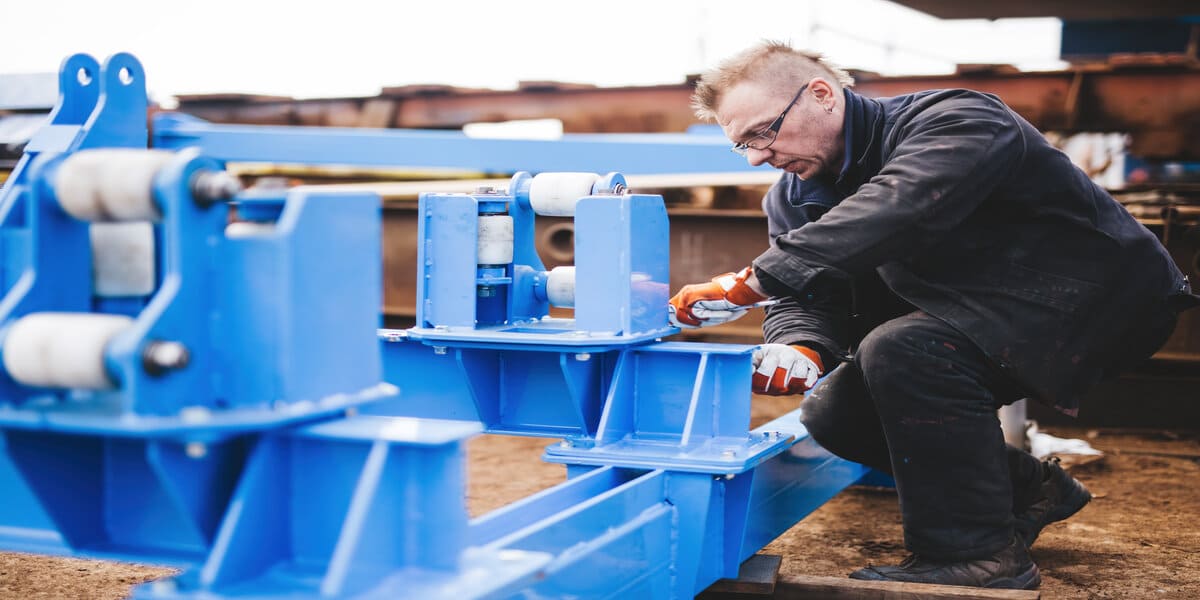
Joining and Assembly Strategies
Joining and assembly are the final stages in bringing together large fabricated components, often requiring a blend of precision and strength. One common method is bolting, where pre-fabricated holes are aligned, and bolts are used to secure the parts together. This method is favored for its simplicity and the ease of disassembly if needed. Welding is another fundamental strategy, particularly for permanent joins where high strength is necessary. Techniques like MIG and TIG welding are often employed for their reliability and durability in heavy fabrication. In some cases, riveting is used, especially when welding is not feasible or additional structural integrity is needed.
Surface Treatment and Finishing
Surface treatment and finishing are steps in heavy fabrication, enhancing the final product’s durability and aesthetic appeal. Sandblasting is a common preparatory process where a high-speed stream of abrasive material is used to clean and texture the surface of the metal. This technique removes impurities and rust and creates an ideal surface for further treatments. Painting is a key step, providing protection against environmental factors like moisture and chemicals while adding color and finish for visual appeal.
Quality Control in Heavy Fabrication
Quality control is important to ensure fabricated components’ safety, durability, and performance. This begins with material inspection, where raw materials are thoroughly checked for consistency and quality before use. Dimensional accuracy is another aspect, often monitored through precise measurements and using tools like calipers and micrometers to ensure that each component meets the specified dimensions. Non-destructive testing methods, such as ultrasonic testing, X-ray, and magnetic particle inspection, are widely used to detect internal and surface flaws without damaging the parts. Weld quality is particularly scrutinized, as it’s essential for the structural integrity of the final product.
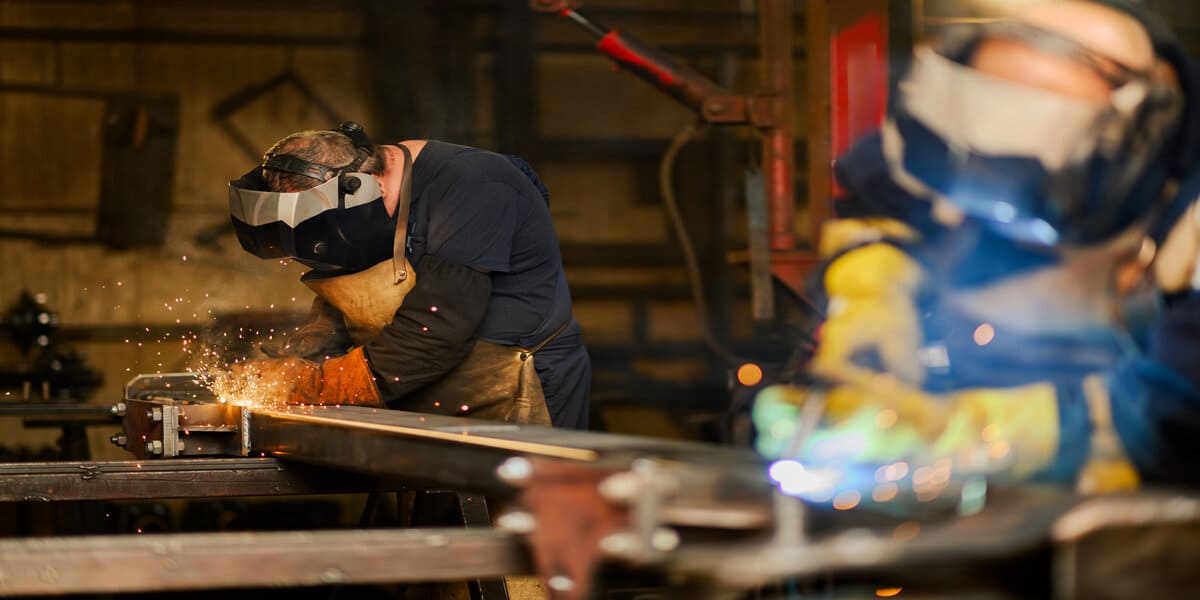
Role of CAD in Heavy Fabrication
Computer-aided design (CAD) systems allow designers and engineers to create detailed 3D models of the components and structures they intend to build. These models provide a visual and technical blueprint for the project, enabling precise dimensions, materials, and assembly planning. The use of CAD enhances accuracy in fabrication, reducing the likelihood of errors that can occur with manual drafting. CAD models can be directly integrated with other technologies, such as Computer-Aided Manufacturing (CAM) systems and CNC (Computer Numerical Control) machines, streamlining the fabrication process. This integration ensures that the designs are accurately translated into physical components, maintaining the integrity of the design throughout the fabrication process.
Automation in Heavy Fabrication
Automation has transformed the landscape of heavy fabrication, introducing efficiency, precision, and safety enhancements. Robotics and automated systems are now integral components of modern fabrication processes. Robots, programmed for specific tasks, are used for repetitive or precision-demanding tasks such as welding, cutting, and material handling. These machines offer consistent quality and speed, reducing the likelihood of human error and increasing productivity. Automated systems also play a crucial role in reducing manual labor, particularly in hazardous or strenuous tasks, enhancing workplace safety.
Safety Practices in Heavy Fabrication
Safety is a top priority in heavy fabrication environments due to the inherent risks of working with large materials and powerful machinery. Key safety practices include using personal protective equipment (PPE), such as hard hats, safety glasses, gloves, and steel-toed boots, to protect workers from potential hazards. Regular training and safety drills are essential to ensure that all employees are aware of and can effectively respond to emergencies. Machinery and equipment should be regularly inspected and maintained to prevent accidents caused by malfunction. Fire safety measures, including readily accessible fire extinguishers and clear evacuation routes, are mandatory.
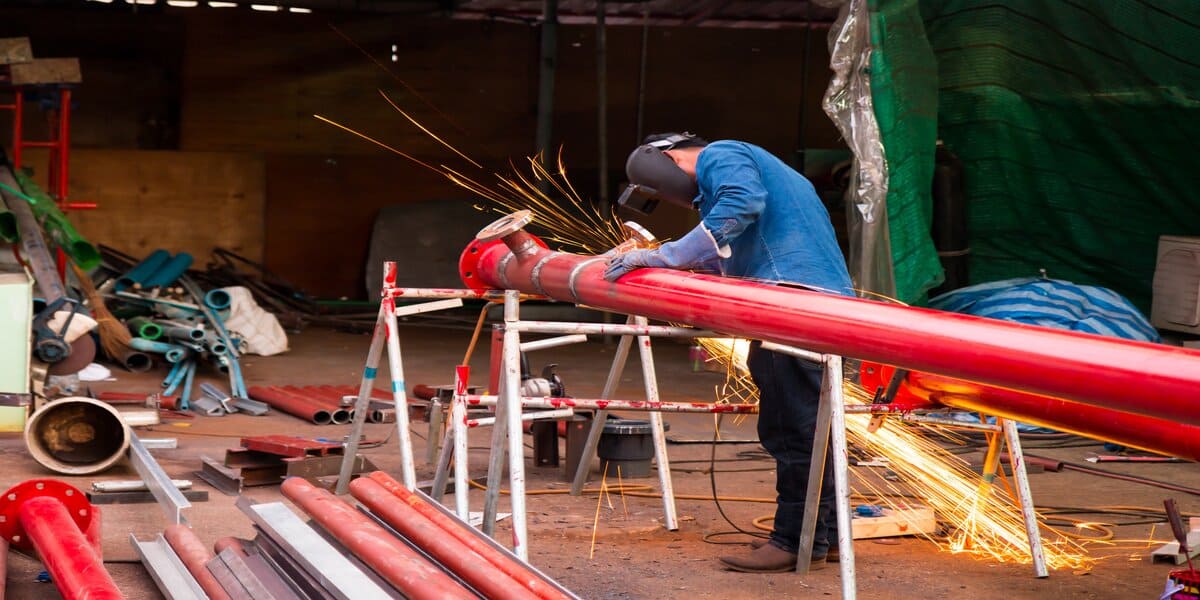
Environmental Considerations
Environmental issues are increasingly watched in the heavy fabrication industry, given its potential environmental impact. One of the primary concerns is the emission of pollutants, which can occur during welding and cutting. Proper ventilation systems and environmentally friendly materials and consumables can help mitigate this. Waste management is another aspect; recycling scrap materials and proper disposal of hazardous waste reduce environmental harm. Energy consumption is significant in heavy fabrication, so adopting energy-efficient machinery and practices, like using renewable energy sources, can significantly reduce the carbon footprint.
Custom Fabrication Techniques
These bespoke solutions often start with a detailed consultation to understand the specific needs and constraints of the project. From there, tailored designs are developed, sometimes using advanced CAD software to visualize and refine the concept. Specialized cutting, bending, and welding techniques may be employed to shape and assemble unique components or structures that standard methods can’t achieve. These custom fabrication techniques allow for a high degree of flexibility and innovation, creating one-of-a-kind structures or components that meet exact client specifications and functional requirements.
Material Handling in Heavy Fabrication
Material handling in heavy fabrication involves the movement and positioning of large and heavy materials safely and efficiently. Using overhead cranes is common in these environments, enabling the lifting and transporting of heavy metal sheets, beams, and fabricated components. Additionally, using conveyors can streamline the movement of parts between different stages of the fabrication process. Safety is paramount in material handling, requiring well-trained operators and adherence to strict safety protocols to prevent accidents.
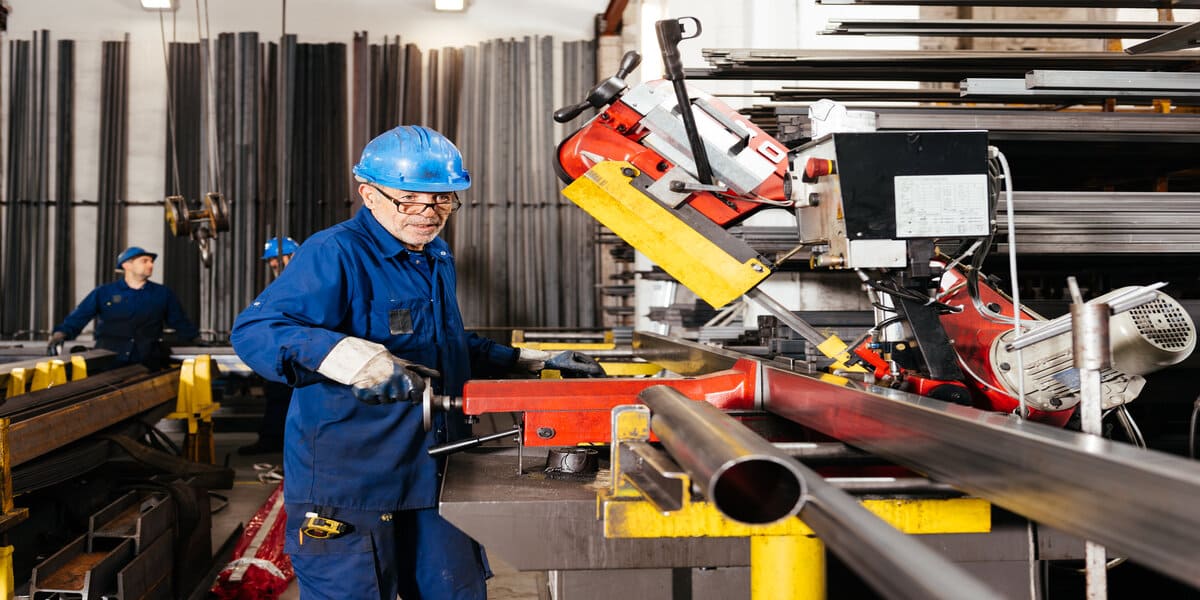
Cost Management in Fabrication Projects
Cost management encompasses budgeting, cost-efficiency strategies, and financial planning. Effective cost management begins with accurate budgeting, thoroughly analyzing all potential expenses, including materials, labor, machinery, and overhead costs. To enhance cost-efficiency, optimizing material usage is crucial, as well as minimizing waste through precise cutting techniques and recycling scrap materials where possible. Labor costs can be controlled by improving process efficiencies and investing in training for workers to enhance productivity. Using automation and advanced technology can initially be costly but often leads to long-term savings through increased efficiency and reduced errors.
Emerging Technologies in Fabrication
Emerging technologies are significantly influencing the field of heavy fabrication, bringing in new capabilities and efficiencies. One notable advancement is in 3D printing or additive manufacturing. This technology is particularly useful for prototyping and producing bespoke components. In robotics and automation, innovators are increasingly using advanced robotic systems for tasks. These emerging technologies enhance heavy fabrication capabilities and improve the industry’s safety, efficiency, and quality.
Project Management for Large-Scale Fabrication
Project management for large-scale fabrication projects is a complex task that requires planning and coordination. Establish a clear project scope and objectives, ensuring all team members understand the project’s goals and requirements. Effective timeline management involves detailed scheduling of each project phase, from design and material procurement to fabrication and assembly. Resource management is another part, which includes allocating labor, materials, and machinery efficiently to avoid bottlenecks and ensure timely completion. Communication is vital in coordinating the various teams and stakeholders involved in the project.
Future Trends in Heavy Fabrication
The future of heavy fabrication is poised for exciting developments driven by technological advancements and evolving industry needs. One trend is the increasing integration of digital technologies, like advanced CAD and CAM systems, IoT, and AI, which will further streamline the fabrication process, enhance precision, and improve efficiency. The focus on reducing environmental impact is expected to drive growth in adopting sustainable practices, including using renewable energy sources, recycling materials, and implementing more eco-friendly fabrication processes. Automation and robotics will continue to advance, potentially leading to more autonomous fabrication systems capable of handling complex tasks with minimal human intervention.

Frequently Asked Questions
What Materials Are Commonly Used in Heavy Fabrication?
In heavy fabrication, professionals frequently use materials like thick metals, alloys, and composites, choosing them for their strength and durability, which is essential for creating structures and machinery suited for heavy-duty use.
What are Some Cutting Techniques in Heavy Fabrication?
Key cutting techniques in heavy fabrication include plasma, laser, and waterjet cutting. Professionals choose each method based on the material type, thickness, and required precision, considering the unique advantages of each.
How Do Professionals Bend and Form Heavy Metals?
Bending and forming heavy metals involve techniques like press brake forming, roll bending, and forging. These processes shape the metal into the required forms and angles for various applications.
What Role Does Machining Play in Heavy Fabrication?
Machining in heavy fabrication includes using large-scale tools like milling, turning, and drilling machines. These are essential for achieving the precise dimensions and finishes needed for the components.
How Do Professionals Control Quality in Heavy Fabrication?
Quality control involves material inspection, dimensional accuracy checks, and non-destructive testing methods like ultrasonic testing to ensure the quality and safety of the fabricated components.
What is the Role of CAD in Heavy Fabrication?
Planners and executors of fabrication projects use CAD (Computer-Aided Design) extensively. It allows for creation of detailed 3D models, ensuring accuracy and efficiency in the fabrication process.
References
American Welding Society (AWS)
